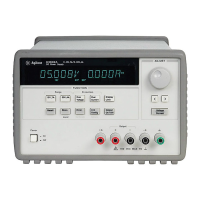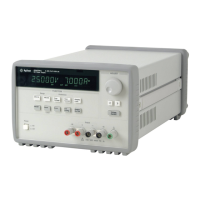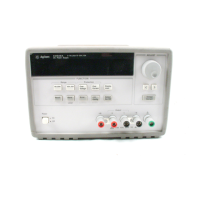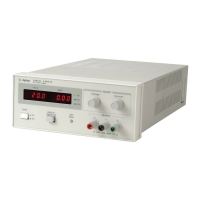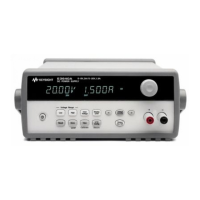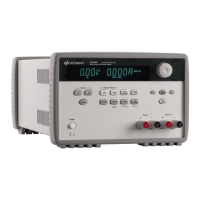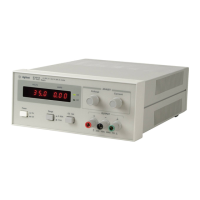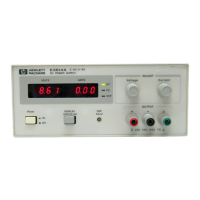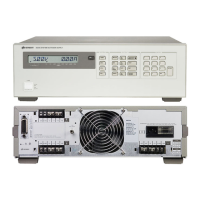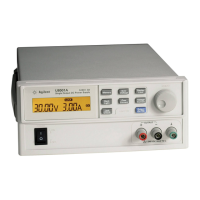Chapter 4 Remote Interface Reference
The SCPI Status Registers
99
4
To Determine When a Command Sequence is Completed
1 Send a device clear message to clear the power supply's output buffer
(e.g., CLEAR 705).
2 Clear the event registers with the *CLS (clear status) command.
3 Enable the “operation complete” bit (bit 0) in the Standard Event register by executing
the *ESE 1 command.
4 Send the *OPC? (operation complete query) command and enter the result to ensure
synchronization.
5 Execute your command string to program the desired configuration, and then execute
the *OPC (operation complete) command as the last command. When the command
sequence is completed, the “operation complete” bit (bit 0) is set in the Standard
Event register.
6 Use a serial poll to check to see when bit 5 (standard event) is set in the Status Byte
summary register. You could also configure the power supply for an SRQ interrupt
by sending *SRE 32 (Status Byte enable register, bit 5).
Using *OPC to Signal When Data is in the Output Buffer
Generally, it is best to use the “operation complete” bit (bit 0) in the Standard Event
register to signal when a command sequence is completed. This bit is set in the register
after an *OPC command has been executed. If you send *OPC after a command which
loads a message in the power supply's output buffer (query data), you can use the
“operation complete” bit to determine when the message is available. However, if too
many messages are generated before the *OPC command executes (sequentially), the
output buffer will fill and the power supply will stop processing commands.
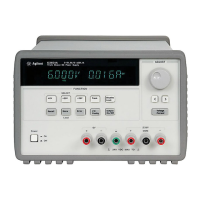
